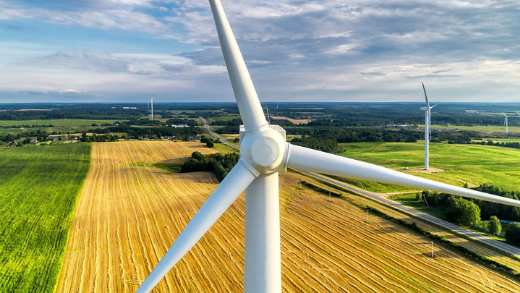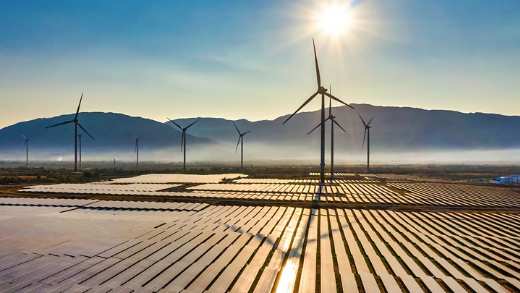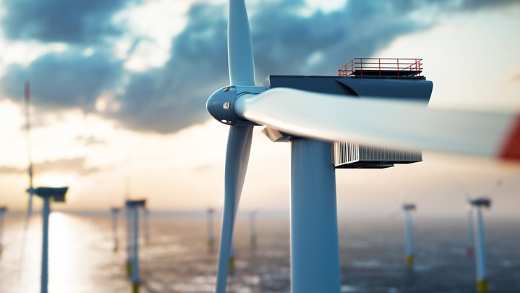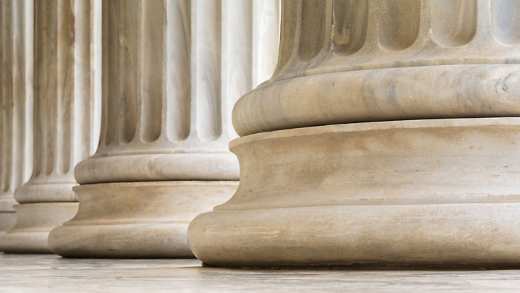In December 2020, high-profile environmental lawyer Roger Cox stood in a district court in The Hague and suggested oil major Shell was not raising the bar high enough with its climate commitments. Representing Milieudefensie, the Dutch arm of Friends of the Earth, he said Shell was “on a collision course” with the climate target agreed by the international scientific community and assorted governments.
To help meet the ambition of the Paris Agreement, where the goal is to limit global temperature increases to well below two degrees Celsius above the pre-industrial average, and ideally to 1.5 degrees, should Shell do more?
“Our climate lawsuit is unique, because we are not asking Shell for compensation, but for it to change course,” said Milieudefensie in a statement on its website. “We are demanding that Shell commits to reducing its CO2 emissions by 45 per cent by the year 2030.2
Cox has a strong track record. After writing Revolution justified: Why only the law can save us now3, he successfully led legal action against the Dutch government, forcing it to pick up speed on climate action [Proceedings concluded in 2019]. He used tort, the legal principle that sets out how action (or inaction) might lead to harm. By establishing the Dutch government was failing in its duty of care to its citizens by dragging its feet on climate action3, he injected greater urgency into the debate.
Testing the law as a governance tool
The volume of climate litigation is stepping up (see Figures 1 and 2). Cases have almost doubled from 884 to 1550 since 2017.4 Most litigation (79 per cent) has been in the US; just 10 per cent has been directed at corporates. The majority of the 135 businesses facing challenges are energy and natural resources companies.
Climate litigation cases have almost doubled from 884 to 1550 since 2017
At this stage, the financial consequences are unclear. “Contrary to popular understanding, not all direct costs will arise at the end of legal proceedings,” wrote Javier Solana, a lecturer at University of Glasgow’s School of Law, in an academic paper last year.5 Ultimately, total costs may be much higher than headline fines or court orders, particularly if litigation results in long-lasting reputational damage.
The action is testing the role of the judiciary and reflects important social questions around values and expectations. “People have been talking about climate for 25 years, but it is only recently that views have started to crystalise,” says Paul Pritchard from sustainability consultant Iken Associates. “The younger generation wants to see more action; they are taking this much more seriously. They will reflect their values and choices in their behaviour: where they work, where they invest their money and so on.”
Figure 1: Climate-related litigation: Total cases 1986-2019

Figure 2: Climate-related litigation: Cases against companies 1986-2019

Taking legal action against a company using tort is not straightforward, however; the nature of the law is different, as are the targets.
“It is challenging because the commitments a company makes are voluntary, and it is questionable whether they could be enforced in court,” says Joana Setzer, assistant professorial research fellow at the Grantham Research Institute on Climate Change and the Environment at the London School of Economics (read a detailed interview with Setzer here).
“The Shell case is important because it is asking whether the company is going to deliver on its targets. Those bringing the case are saying: ‘It does not look as if you are doing that’, and really calling on Shell to change its core business model.”
The key analytical tool that might prove pertinent is climate attribution. This rapidly evolving science allows human impacts on climate change to be assessed (within certain data constraints), right down to the individual company level. By taking a pre-industrial climate scenario, then comparing it with one that takes man-made emissions into account, it may be possible to define the human contribution in a particular scenario. These developments are significant because until recently it was not possible to be definitive about causative relationships.
One important consideration is whether greenhouse gas emitters can be shown to have known about environmental risks but pressed ahead regardless. If evidence like this coexists with information from an internationally recognised body like the Intergovernmental Panel on Climate Change, companies may find it harder to have cases against them dismissed.
“If they rule against Shell, it could be game changing,” says Sora Utzinger, senior environmental, social and governance (ESG) analyst at Aviva Investors. “It would potentially open the door to similar action elsewhere. More governments have announced plans to reach net zero, and companies have changed their behaviour accordingly, to reflect what society wants to achieve. This is different; it would make their commitments binding.”
Facing up to responsibility for the global commons
In Germany, another climate case is being played out. A small-scale Peruvian farmer, Saul Luciano Lliuya, is taking on the German utility RWE, backed by the sustainable development organisation Germanwatch.6 RWE is in the dock for impacts in Peru, although it has no operations there at all.
RWE is in the dock for impacts in Peru, although it has no operations there at all
The company is one of Europe’s largest carbon dioxide emitters, giving out around 100 million tonnes of CO2 annually from fossil-fuel fired power stations and other assets.
Lliuya is seeking damages from RWE to compensate for the investment he has made to protect his home. The amount itself is not vast – less than half of one per cent of the total cost incurred by himself and the local authorities. But if Lliuya’s legal team is ultimately successful using a ‘general nuisance’ clause in the German Civil Code, it potentially opens the floodgates to countless other claims.
The complex web linking social values and risk
So, what does this imply? “We see the environment as a foundation of society, as a necessary condition, of constitutional democracy, as a condition to be able to exercise the other rights you have,” says Laura Burgers from the Amsterdam Centre for Transformative Private Law at the University of Amsterdam.7
The analytical framework involves an intricate web of physical, transition and litigation risk
The analytical framework that has developed to encapsulate the changing environment involves an intricate web of physical, transition and litigation risk. “As physical risks become larger, so does the litigation risk,” Setzer says. “But transition risks also increase litigation risk. This is why it is important for private actors to track cases against states, not just cases against companies they invest in or insure.”
Recent analysis by the UN Environment Programme points to six key areas where litigation may step up:
- Cases resulting from mass displacement of people in the Global South;
- Claims against companies for failure to disclose or inadequate disclosure;
- Cases based on the alleged failure to plan or manage the consequences of extreme climate events;
- Disputes related to the implementation of adaptation measures;
- Cases linked to the attribution of responsibility against parties deemed to have caused injury or losses;
- Increased use of international adjudicatory bodies.
Where might these various risks present? What mechanisms might be lightning rods for risk transmission? No clear answers emerge. A high-profile case could prove a tipping point, but Pritchard believes a more likely outcome is that litigation will “pick up laggards, rather than drive change fundamentally”.
There is plenty of stakeholder tension to contemplate as well. If carbon-heavy businesses accelerate towards transition, will their return on capital fall? Could that leave emitters open to criticism from climate change activists as well as disgruntled shareholders?
All this suggests an environment that requires thoughtful handling, particularly as there is little consistency on carbon disclosures. Ultimately, best practise means companies that could be targets of climate action need to inform their shareholders, build provisions, and ensure material risks are recorded in annual reports. In the background, they need to recognise the potential to be challenged in jurisdictions in which they do not operate.
Institutional investors need to think carefully about their duties to clients
Institutional investors also need to think carefully about their duties to clients, how risk exposures are being presented and their ability to verify claims made about their environmental credentials. Insurers, meanwhile, need to prepare for detailed scenario analyses with forensic scrutiny of underwriting decisions and assets, to help mitigate the uncertainty.
These issues reflect the complex way the environment is changing; how environmental protest has become global and how climate action is part of an evolving social debate.
“Litigation is being used in every direction, and we are going to see more of it,” Setzer warns. “The terrain becomes complex, risks and uncertainty are high, and the players involved are powerful. It will be a hard fight.”


















